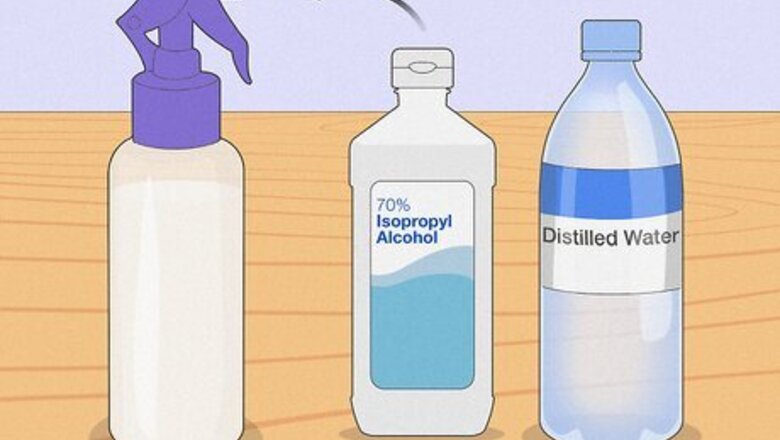
views
Febreze Spray without Fabric Softener

Pour isopropyl alcohol and distilled water into a spray bottle. Insert a funnel into the mouth of a clean spray bottle. Then, add ¼ cup (59 ml) of isopropyl alcohol and ½ cup (118 ml) of distilled water. Isopropyl alcohol is a disinfectant that kills odor-causing germs and bacteria. As a bonus, it evaporates quickly and helps the spray dry faster. Distilled water removes chemicals and minerals that can cause odors. If you don’t have any on hand, make your own distilled water. Tip: Use vodka, grain alcohol, or witch hazel in place of the isopropyl alcohol. Double, triple, or quadruple the recipe if you need to make more Febreze spray.

Add 15 to 25 drops of your favorite essential oils. While the alcohol in the spray helps get rid of odors, the essential oils make your furniture, linens, and home smell great. Simply add 15 to 25 drops of your favorite essential oil, like lavender, citrus, or mint. Or, combine different essential oils together, like: Orange and peppermint Lavender, lemon, and rosemary Eucalyptus, tea tree, and lavender Bergamot, lemon, rosemary, and peppermint Orange, ginger, and ylang-ylang Alternatively, use a pre-mixed essential oil blend. Warning: Some essential oils can be harmful and potentially toxic to dogs, cats, and other pets. Talk to your vet to find out what essential oils are safe to use.
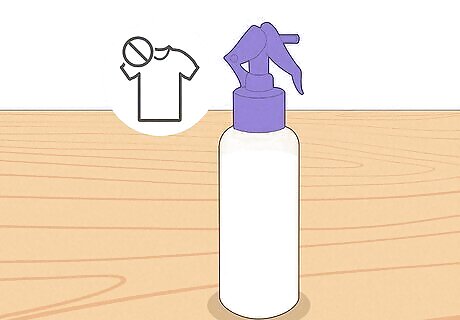
Shake the spray bottle well before using it around your home. Screw on the spray bottle top and shake the bottle vigorously to combine all of the ingredients. Then, spray your DIY Febreze spray on fabrics, furniture, and curtains, or simply spray it in the air. Shake the bottle every time you use the spray. The essential oils naturally separate from the water and alcohol.
Deodorizing Febreze Spray
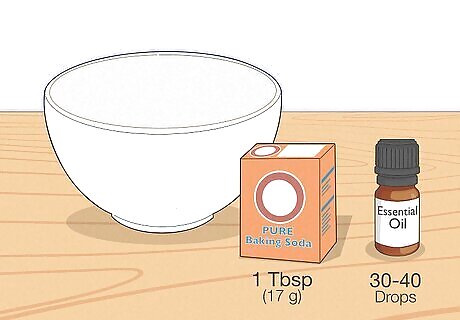
Mix 1 tbsp (17 g) of baking soda with 30 to 40 drops of essential oil. Baking soda is a natural deodorizer that removes and neutralizes smells. Simply pour 1 tablespoon (17 g) of baking soda into a small bowl. Then, add 30 to 40 drops of your favorite essential oils and mix the ingredients together. For instance, use essential oils like lavender, lemon, tea tree, peppermint, bergamot, ginger, or orange. Or, use an essential oil blend. Combining the essential oils with the baking soda helps the oils stay in place when you make the rest of the spray.
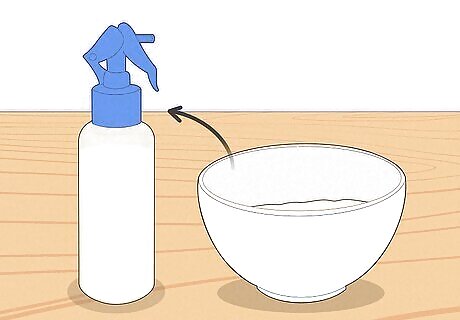
Add the baking soda mixture into a spray bottle. Place a funnel inside a clean spray bottle. Then, carefully add in the baking soda and essential oil mixture.

Pour 1 c (236 ml) of distilled water and isopropyl alcohol into the bottle. Using distilled water removes smelly chemicals and minerals while the alcohol kills odor-causing bacteria. Simply add 1 cup (236 ml) of distilled water and 1 cup (236 ml) of isopropyl alcohol to the spray bottle. Use vodka or witch hazel as an alternative to isopropyl alcohol.
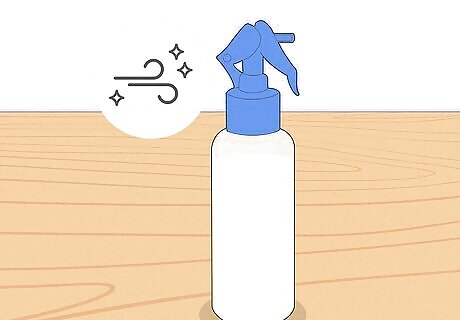
Shake the bottle before using your spray. Twist the spray bottle cap onto the bottle. Then, shake the bottle thoroughly to combine all of the ingredients. Spray your DIY Febreze on furniture, clothes, and blankets, or spray it into the air. Give the bottle a shake before you use it to recombine the ingredients.
Disinfecting Febreze Spray
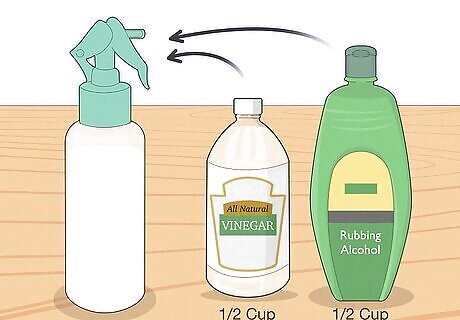
Pour ½ c (118 ml) of white vinegar and rubbing alcohol in a spray bottle. Vinegar is a natural deodorizer that also helps kill germs and bacteria. Just measure out ½ cup (118 ml) of white vinegar and ½ cup (118 ml) of rubbing alcohol and add them to a clean spray bottle. Rubbing alcohol is also effective at neutralizing smells and disinfecting surfaces. It also helps the spray dry quickly. Don’t worry if you don’t love the smell of vinegar—it dries without an odor.
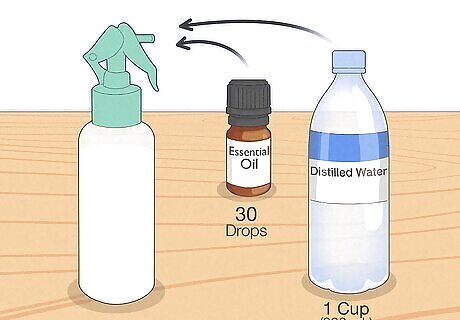
Mix in 1 c (236 ml) of water and 30 drops of disinfecting essential oils. Pour 1 cup (236 ml) of distilled water into the spray bottle. Then, add in 30 to 40 drops of an essential oil that has antimicrobial and antibacterial properties. For example, use lavender, peppermint, eucalyptus, tea tree, thyme, cinnamon, or clove. Feel free to combine different oils or use other essential oils than those listed here.
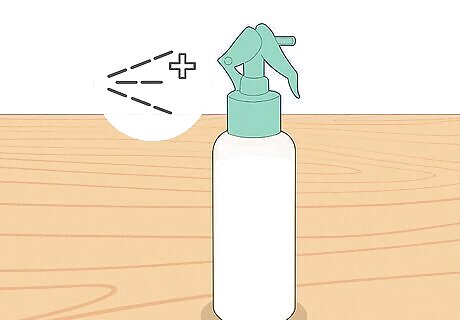
Shake the spray bottle before using your fabric refresher. Tighten the spray bottle cap and then shake the bottle vigorously to combine all of the ingredients. Then, spritz the spray around your house to disinfect and freshen furniture, linens, and clothes. Always shake your spray bottle before using it. The essential oils naturally separate from the other ingredients.
Febreze Room Spray
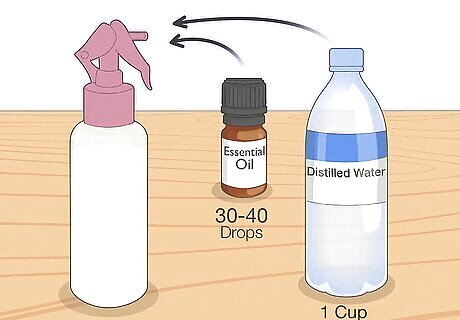
Fill a spray bottle with water and 30 to 40 drops of essential oils. For a quick, DIY room spray that freshens your space and masks smells, add distilled water to a clean spray bottle. Then, pour in 30 to 40 drops of your favorite essential oil, or combine different oils together. For example, combine: Lavender, rosemary, and peppermint Bergamont, patchouli, and eucalyptus Cinnamon, clove, and orange Geranium, rose, and lavender As an alternative, use an essential oil blend. Leave some space at the top of the bottle so the mixture doesn’t spill out when you put on the top.

Shake up the bottle and spritz the spray around your house. Screw on the top and shake the bottle to mix the water and essential oils together. Then, spray it in your kitchen, living room, bathroom, bedroom, or car to leave your space smelling great. Because this spray doesn’t include a deodorizer like alcohol, baking soda, or vinegar, it won’t neutralize odors. However, it will leave your home with a pleasant scent. Shake the spray bottle before using it, as essential oils separate from water.
Febreze Spray with Fabric Softener
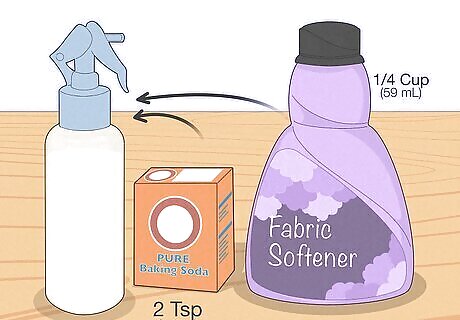
Add baking soda and fabric softener to a spray bottle. Insert a funnel inside a clean spray bottle. Then, pour in 2 teaspoons (12 g) of baking soda and ¼ cup (59 ml) of the fabric softener of your choice. The baking soda absorbs odors while the fabric softener leaves your furniture and fabrics smelling fresh and clean. Use a fabric softener in your favorite scent, or use whatever softener you have on hand. As an alternative, use scented beads, like Downy Scent Booster Beads, in place of fabric softener.

Fill the rest of the spray bottle with hot distilled water. Heat enough distilled water to fill the rest of the spray bottle. Just bring the water to a boil over your stove or in an electric kettle. Then, let the water cool down for 30 to 60 minutes before pouring it into the bottle. Using hot water instead of lukewarm or cool water helps the baking soda and fabric softener to dissolve and mix with the water. Distilled water removes impurities that can cause odors. Leave a bit of room at the top of the bottle so the mixture doesn’t overflow when you put on the cap.
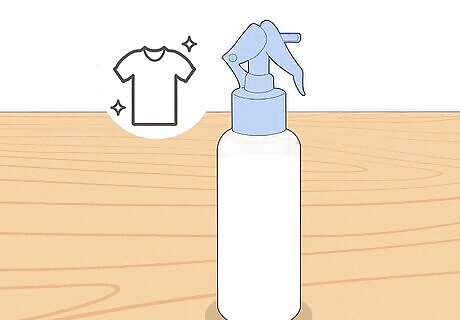
Shake the spray bottle thoroughly before using it. Put the cap on the spray bottle and then shake and swirl it to mix the ingredients together. Then, use your homemade Febreze spray just as you would use the commercial version. Spray it on bedding, rugs, drapery, furniture, and carpets to get rid of odors and make your place smell great. If you used scent beads, let the bottle sit for 30 minutes to 1 hour to give the beads time to dissolve. Then, shake up the bottle. Shake up your spray bottle before you use it to combine any ingredients that separated while it was in storage.
Does Febreze contain toxic ingredients?
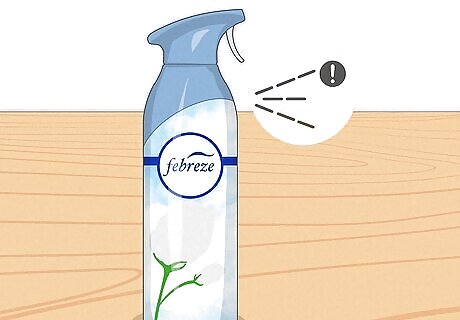
Febreze sprays can contain some irritating or harmful ingredients. According to the Environmental Working Group, most Febreze fabric and air freshener sprays have a low level of health concern. The fragrances and ingredients used in the sprays can potentially cause allergies, asthma attacks, and skin irritation. Some ingredients used in Febreze sprays, like dipropylene glycol, have been somewhat linked to developmental toxicity as well as cancer. Other ingredients used in Febreze sprays can be harmful to the environment. Febreze certifies that their products are safe to use around people and pets. They list all of their ingredients and don’t include harmful additives like phthalates and benzene. If you want to ensure your fabric refresher is safe to use and good for the environment, make your own spray using one of the DIY methods above.
Keeping Your Home Smelling Clean
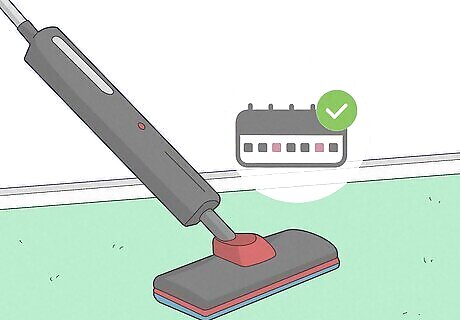
Vacuum your home once or twice per week. The trick to keeping your home smelling great is regular cleaning. Your floors and carpets quickly accumulate debris that can lead to unpleasant odors. Simply vacuum your carpets and hard floors weekly or biweekly to remove food crumbs, spills, dirt, dust, and other sources of bad smells.
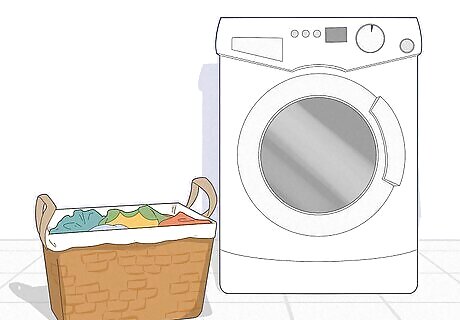
Stay on top of your laundry. Dirty laundry, especially when it’s damp or wet, can lead to odors that stink up the entire house. Damp laundry can also lead to mold growth, which can damage your clothes. When you have a full load of laundry, immediately wash your clothes to prevent unpleasant odors. If you have damp or wet laundry and can’t wash it right away, hang it up to dry before throwing it into your clothes basket. Place your dirty clothes in a laundry basket to keep your dirty items in one place and to minimize odors around the house.
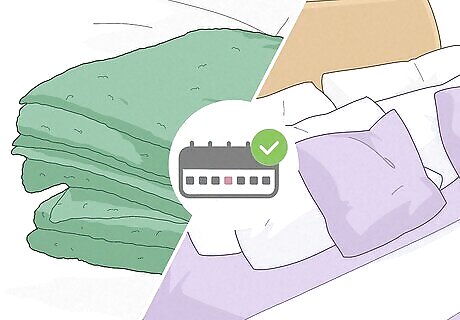
Wash bedding, linens, and towels about once per week. Regularly washing your bedding and towels helps to eliminate odors in your home. This is especially true if you have pets that sleep on the bed. Each week, launder your towels and sheets in the hottest water that’s safe for them to kill germs and odor-causing bacteria. Wash your sheets, towels, and linens in separate laundry loads.

Clean your refrigerator every few months. Your refrigerator can harbor lots of unpleasant odors. About 2 to 3 times per year, clean out your refrigerator and wipe down the shelves and compartments. During a regular cleaning: Throw out any old, expired, or rotten food. Remove all the drawers and shelves and wash them with warm, soapy water. Wipe down the inside of the refrigerator with soapy water. Rinse and dry the inside of the refrigerator. Dry and replace the shelves and drawers.
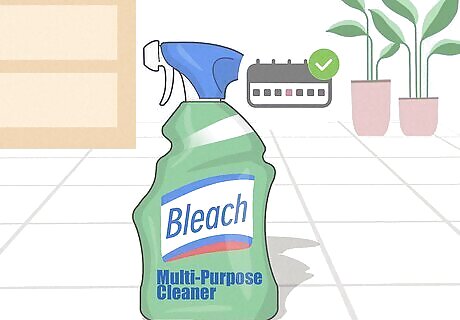
Clean your bathroom about once per week. The bathroom is another source of bad smells, and keeping it clean helps you stay healthy and improve the scent of your home. Use your favorite all-purpose cleaner or bathroom cleaner to clean the toilet, sink, and shower or bathtub. Then, vacuum and wash the floor and launder the bath mats. Deal with sink and shower clogs as soon as they happen, as clogs can lead to bad smells in the drains. Wipe down the shower or bathtub walls with a towel or squeegee after each shower to prevent mold growth and moldy smells.

Take out the garbage when your trash can is full. Garbage is a huge cause of odors. When your trash can is full, tie up the bag and place it in your garbage can outside to wait for collection day. About once per month, clean your trash can with warm water and dish soap. Then, dry it with a cloth before putting in a new trash bag.

Brush and groom your pets regularly. Pets can also contribute to house odors, so it’s important to keep them clean and well-groomed. Depending on your type of pet and their breed, brush them either daily or weekly and bathe them about once per month. Clean your pet’s bedding, cage, food bowls, toys, and other accessories every few weeks, too.
















Comments
0 comment